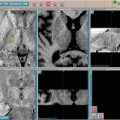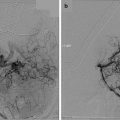© Springer Science+Business Media New York 2015
Lawrence S. Chin and William F. Regine (eds.)Principles and Practice of Stereotactic Radiosurgery10.1007/978-1-4614-8363-2_2929. Pituitary Tumors: Viewpoint— Medical Therapy
(1)
Division of Endocrinology & Metabolism, State University of New York Upstate Medical University, 3229 East Genesee Street, Syracuse, NY 13214, USA
Introduction
The management of tumors originating from the pituitary requires consideration of both hormonal functionality and mass effect of the tumor. Tumors can arise out of any of the pituitary cell types and each can produce a clinical syndrome with a typical corresponding response to therapeutic efforts. It is important that endocrine function be evaluated prior to any treatment because some pituitary tumors, such as prolactinomas, will respond very well to medical treatment, obviating the need for surgery. Even when surgery is the primary treatment for a pituitary tumor, the nature of the tumor can determine what pre- and postsurgical therapy will be indicated. In addition, large tumors can cause hypopituitarism that needs to be addressed before surgical intervention is attempted. Surgical and radiation therapy can result in pituitary dysfunction that requires medical management and replacement hormone therapy.
Diagnosis and Classification
By convention, pituitary tumors are usually classified into microadenomas, those less than 1 cm in diameter, and macroadenomas which are greater than or equal to 1 cm. Microadenomas that are not hypersecreting hormones are often discovered incidentally on imaging. Small or large hypersecreting tumors usually come to attention because of symptoms of a hormone excess syndrome such as acromegaly or Cushing’s syndrome. In addition, macroadenomas may present with symptoms such as visual changes, headaches, or cranial nerve dysfunction as a result of mass effect of the tumor. Symptoms of pituitary hypofunction are often found in these cases upon detailed questioning of the patient, even when they are not the presenting complaints.
It is important to distinguish tumors of non-pituitary origin that can occur in the sellar region from those that arise from the pituitary. Most lesions of non-pituitary origin have classic radiologic appearance, including meningiomas, hamartomas, and craniopharyngiomas. Infiltrative processes such as lymphocytic hypophysitis and sarcoidosis can usually be easily distinguished as well, but can look like tumors.
The relative role of surgical and medical therapy and radiotherapy in pituitary adenomas depends on the specific subtype of tumor. Many pituitary tumors require more than one treatment modality, and optimal therapy involves collaboration between the surgeon, endocrinologist, radiation oncologist, and neuroradiologist.
Pituitary Tumor Subtypes
Prolactinomas
Diagnosis
Prolactinomas, or prolactin-secreting pituitary adenomas, are the most common type of functioning pituitary lesion and account for about 40 % of all pituitary tumors. In most cases, patients present with typical signs and symptoms. In women, these include amenorrhea and galactorrhea. Men most often present with symptoms of hypogonadism including decreased energy and sexual dysfunction. The prevalence of prolactinomas is somewhat higher in women than in men [1]. Bone loss may occur as a result of suppression of sex steroid production [2].
Diagnosis is usually easily established by the presence of elevated serum prolactin levels. Levels greater than 500 μg/L are essentially diagnostic of prolactinoma; those greater than 250 μg/L are usually prolactinomas (although some medications can cause elevations this high). Prolactin levels less than 250 μg/L can result from stalk compression or other causes, but can represent a small prolactinoma as well.
It is important to note that in the presence of a large pituitary tumor, mildly elevated prolactin levels (<100–150 μg/L) may be the result of stalk compression by the tumor. Prolactin secretion is tonically suppressed by dopamine delivered to the pituitary from the hypothalamus. Disruption of this pathway by compression of the stalk results in elevated serum prolactin levels. Treatment with medication in this situation will decrease prolactin levels, but will not control tumor growth.
Management
Of all pituitary tumors, prolactinomas are the most responsive to medical therapy. The goal of therapy is to normalize prolactin levels and reduce tumor size, and this goal can usually be attained quickly with one of two dopamine agonists available in the United States. Dopamine agonist therapy is efficacious in treating even large tumors that are compressing the optic chiasm and causing visual changes. This success in treatment with medication has made surgery for prolactinomas generally unnecessary, a development that has occurred over the past several decades.
The two dopamine agonists available in the United States are bromocriptine and cabergoline. Cabergoline is generally preferred because of evidence of higher efficacy and a lower side effect profile. Bromocriptine can be used in patients who do not tolerate cabergoline or if cost is a significant consideration, as cabergoline is a more expensive medication.
Over the past several years, there has been concern about evidence of cardiac valve regurgitation in patients taking high doses of dopamine agonists for treatment of Parkinson’s disease. The data are somewhat equivocal, but so far there is no strong evidence that such damage occurs in patients taking the significantly lower doses used to treat prolactinomas [3].
Surgical intervention is generally reserved for patients with tumors resistant to, or for patients who are intolerant of, dopamine agonists, patients considering pregnancy during which tumors might increase in size, or those who suffer pituitary apoplexy. Approximately 10 % of patients are resistant to cabergoline therapy even after dose optimization.
Radiotherapy is recommended for patients who are intolerant of dopamine agonist therapy and in whom surgery has failed to control tumor growth. There are rare cases of very aggressive or malignant prolactinomas. These usually require surgical and/or radiation therapy. Temozolomide therapy has been used as chemotherapeutic treatment of malignant prolactinomas as well.
Corticotroph Adenomas
Diagnosis
Cushing’s disease is defined as the condition of excess cortisol production caused by an adrenocorticotropic hormone (ACTH)-secreting pituitary adenoma. In the absence of treatment, this is a disease with high morbidity and mortality largely due to cardiovascular effects and abnormal glucose metabolism. Patients with cortisol excess, or Cushing’s syndrome, usually come to medical attention because of typical clinical features. The most specific of these features are easy bruising, facial plethora, proximal myopathy, and wide violaceous striae on the abdomen or upper thighs. In addition, there are a host of less discriminating features present in the general population that, in the right clinical setting, might prompt investigation for Cushing’s syndrome such as central obesity and new-onset diabetes mellitus.
The diagnosis of Cushing’s disease involves first confirming the presence of hypercortisolism. Because none of our current tests for hypercortisolism has 100 % specificity or sensitivity, this is a process that requires multiple confirmatory tests, especially in more subtle cases [4]. Once established, it must be determined whether the hypercortisolism is ACTH dependent. This can usually be achieved with measurement of a serum ACTH level.
The majority of ACTH-dependent hypercortisolism is caused by corticotroph adenomas. However, evaluation of possible Cushing’s disease is complicated by the high incidence (about 10 %) of nonfunctioning pituitary incidentalomas. It is possible to misattribute ACTH-dependent Cushing’s syndrome to a nonfunctioning pituitary adenoma. Care must be taken to avoid missing a diagnosis of ectopic ACTH production (for instance, from a bronchial carcinoid), which might result in unnecessary pituitary surgery and failure to cure the underlying process.
Management
The goal of therapy is to rapidly normalize serum cortisol levels. Surgery is the primary treatment of corticotroph adenomas. Reported rates of remission resulting from transsphenoidal surgery range from 69 to 98 % [5]. The highest remission rates are in cases of noninvasive microadenomas, while lower rates of success are seen in macroadenomas with invasion into the cavernous sinus. Conventional radiotherapy and stereotactic radiotherapy are used as adjuvant therapy, but their effects are slow and do not achieve prompt control of hypercortisolism.
There are a number of medical therapies that decrease either ACTH or cortisol secretion. Most have significant side effect profiles that can limit their use, but they may prove beneficial in certain situations. In particular, medical therapy is often employed in patients who have received radiation therapy and are awaiting the often delayed results of that, those who are not candidates for surgery or in whom the source of ACTH is uncertain, in very ill patients to ameliorate the effects of hypercortisolism before surgery, or in patients with recurrent or persistent hypercortisolism after surgery.
Inhibitors of steroidogenesis include ketoconazole, metyrapone, mitotane, and etomidate. Ketoconazole has been used extensively in control of cortisol secretion. It is often well tolerated, but use can be limited by derangements of liver enzymes. Metyrapone inhibits 11-beta-hydroxylase activity. Its use is limited by androgenic effects in women and mineralocorticoid-related adverse effects. It is also not available commercially and the producing company must be contacted directly to obtain it. Mitotane has significant gastrointestinal and neurologic adverse effects. Also, once taken, it is stored in adipose tissue for about 2 years. Etomidate is used often in induction of anesthesia and is generally too sedating for practical long-term use.
Centrally acting agents include cabergoline and pasireotide. While cabergoline, a dopamine agonist discussed previously, does have a relatively low side effect profile, it is generally not very efficacious in controlling serum cortisol levels and any effect seen is not always sustained [6]. Pasireotide is a somatostatin receptor ligand that has shown some potential for use in Cushing’s syndrome, but results of ongoing research are pending [7]. There is some evidence that combined therapy with cabergoline, pasireotide, and ketoconazole may be useful. The glucocorticoid receptor antagonist mifepristone (RU486) has proven useful in some cases of hypercortisolism [8].
Bilateral adrenalectomy is necessary in some patients with refractory hypercortisolism or who have been intolerant to several other interventions, or in whom the source of ACTH overproduction cannot be identified. This option is complicated by the risk of Nelson’s syndrome (enlargement of the pituitary adenoma secondary to lack of suppressive feedback from circulating cortisol). If bilateral adrenalectomy is employed, lifelong steroid replacement will be required.
Somatotroph Adenomas
Diagnosis
Growth hormone-secreting, or somatotroph, adenomas cause gigantism in children and acromegaly in adults. Acromegaly is a rare disease associated with increased morbidity and early mortality. Clinical onset can be insidious and the disease can take years to be recognized. Suspicion for the condition should be raised in patients with two or more of the following comorbidities: new-onset diabetes, diffuse arthralgias, new-onset or difficult-to-control hypertension, cardiac disease including biventricular hypertrophy and diastolic or systolic dysfunction, fatigue, headaches, carpal tunnel syndrome, sleep apnea syndrome, diaphoresis, loss of vision, colon polyps, and progressive jaw malocclusion [9]. The finding of an elevated insulin-like growth factor-1 (IGF-1) level, combined with suspicious clinical features and a pituitary lesion on MRI, is sometimes adequate to make the diagnosis of acromegaly. However, in equivocal cases an oral glucose tolerance test with serial growth hormone (GH) measurements is used to confirm the diagnosis. Inadequate suppression of GH on this test indicates the presence of a somatotroph adenoma.
Stay updated, free articles. Join our Telegram channel

Full access? Get Clinical Tree








